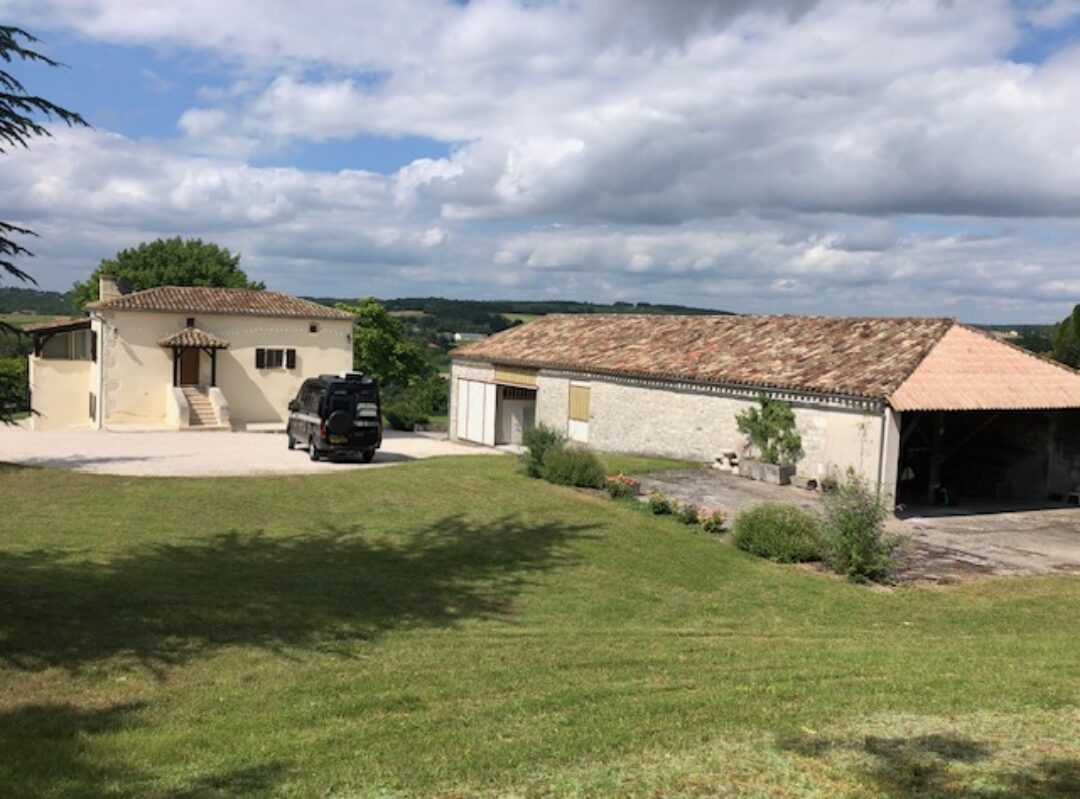In July we spent all of our nights at campsites or serviced aires so we decided to get back to a few more off-grid stops. Excluding July, we’ve spent about 40% of our nights at self-sufficient off-grid free locations (without electricity, water or waste facilities) and it’s something we’d like to increase for future trips. Some of these stops have been off the beaten track with no-one else around, but in high season suitable spots tend to attract other motorhomers so you’re rarely alone.
We had hoped to be able to stop somewhere near Trégastel along the pink granite coast, known for its large pink granite rock formations. It soon became clear that it’s a popular area that doesn’t encourage motorhomers and we arrived to find the main road blocked off for a busy market day, further reducing parking opportunities. We moved, after negotiating the narrow back streets, but did at least find a decent spot for a lunch stop just past Perros-Guirec and overlooking the Sept-Isles, home to colonies of sea birds.


We generally have a back-up stop in mind, which we moved on to, just on the edge of the town of Tréguier in the adjacent Côte d’Armor department and overlooking the river Jaudy. It was a very scenic spot but the town itself, another Petit Cité de Caractère, and not visible from our base, was hiding more treasures. The town is best known for being the birthplace of St-Yves, the patron saint of lawyers,and Catholic lawyers from around the world have made pilgrimages to Tréguier to pay homage to their patron saint. The town is also one of the seven stops on the Breton pilgrimage, the Tro Breiz or Tour de Bretagne, linking the towns of the seven founding saints of Brittany. It boasts a 14th century cathedral and beautiful cloister, with 48 arches and a wooden ceiling, which was hosting a modern sculpture exhibition with the sculptures displayed between the tombs of former archbishops. The town is dotted with colourful half-timbered houses dating from the 15th century that stretch down to the port area, now a marina.

At each of our coastal stops we have been near to the GR34 coastal path. The GR or Grand Randonée routes are a network of long-distance walking paths throughout Europe and you never seem to be far from one in France. We used the stop as a base to follow part of the path up the river estuary crossing the restored pedestrian footbridge or Passerelle Saint-François, then keeping to the inland path past fields of wheat, sweetcorn and globe artichokes as the shoreline path is submerged at high tide. At this time of years the crops are in full growth and we saw potatoes being harvested and new maize seedlings being planted for a late crop.


Harvesting potatoes 
Globe artichokes
We emerged at the village, or hamlet, of La Roche Jaune and were a little disheartened to come across a closed café but, a few 100 yards further on, an oyster hut with a stunning outlook came into view. This time we sampled the beignets d’huîtres or oyster fritters. Even Joe, who is unlikely ever to let a raw oyster pass his lips, thought they were good. After our stop the timing was perfect for us to take the shore path back to base, as the tide had gone out, past the areas where our lunchtime delicacies had been produced.









